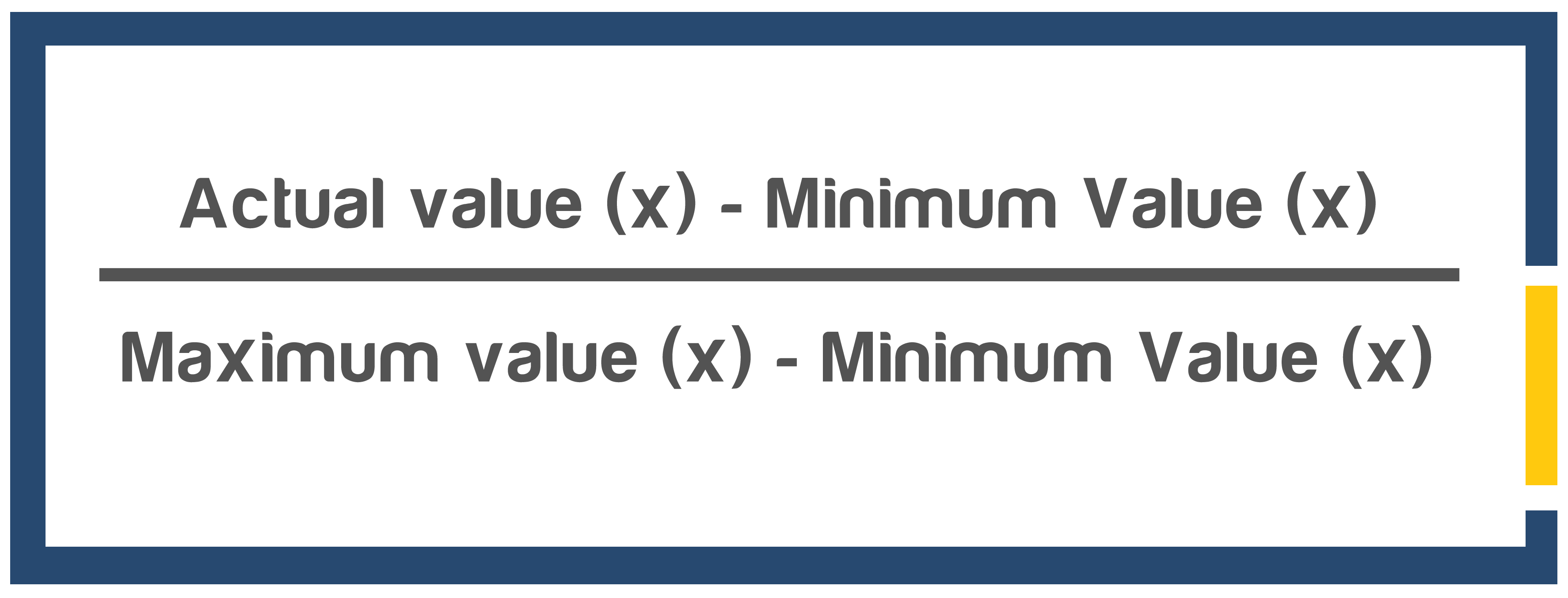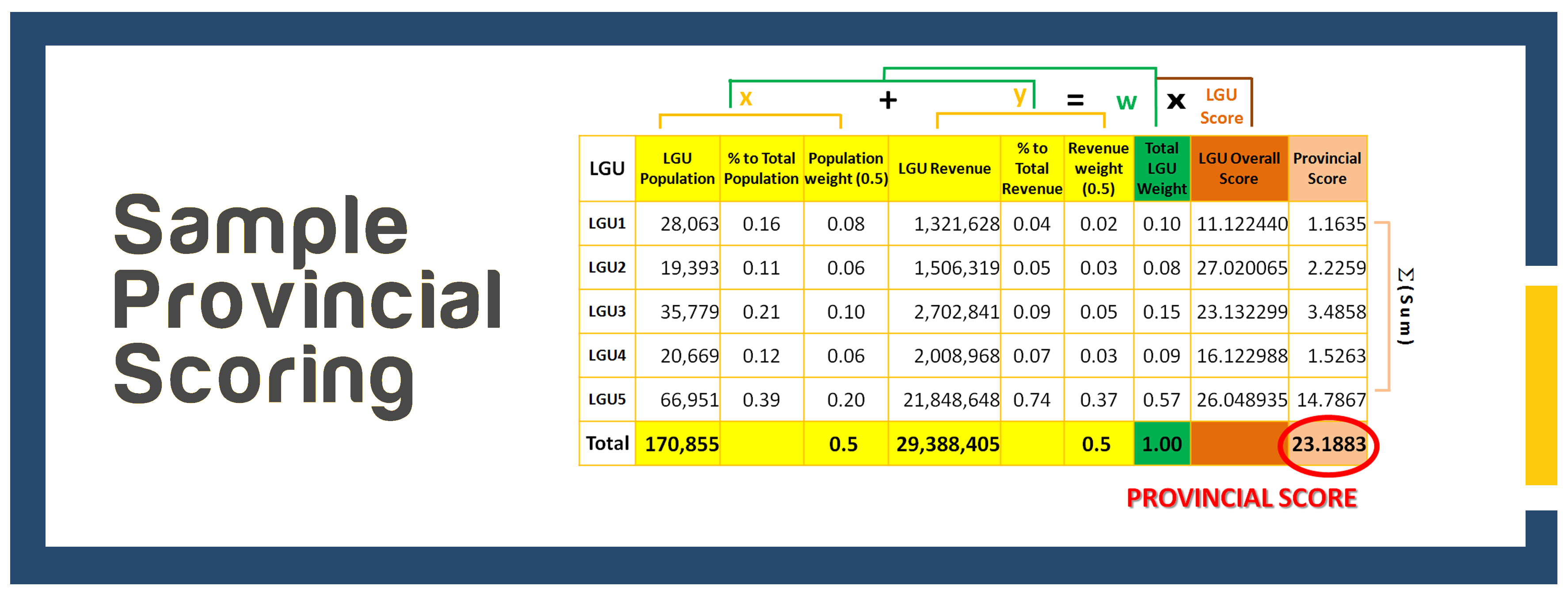Methodology
A. DESCRIPTION
The different data that are gathered to form the index are unique and depend on its nature and type. In order to compute for the index and rank the different components, there is a need to understand the weighing of each component and the manner of computing each indicator.
B. WEIGHTS
Similar to other indices, the competitiveness index ranking has a total index value of 100, representing a fully competitive local unit. The index is composed of five core components with each component representing about 20% of index value, to with:
- Economic Dynamism - 20%
- Governance Efficiency - 20%
- Infrastructure - 20%
- Resiliency - 20%
- Innovation - 20%

Ideally, the number of indicators to be gathered should be equal for each of the five (5) components of the index. There are 10 indicators per core component making each indicator represent 2.0%. Even if the number of indicators per component are lower or higher than 10, the core component will still retain 20% weight. What will change are the weights within the core component. In this version of the index, many indicators were computed from the composite values of two or more sub-indicators. For instance, health infrastructure is composed of public and private data for facilities and rooms available. Thus, there are two components of a single indicator on health infrastructure. The two sub-indicators are ranked separately but are added back as a composite indicator.
C. STANDARDIZING THE COMPUTATIONS
To standardize the computations, we follow the process of computing the components of the human development index (HDI) using our standard formula or Formula 1

D. PROVINCIAL RANKING
Qualification: There are two parameters to qualify for the ranking of the "Most Competitive Province" detailed as follows:
- The combined population of all participating LGUs under the province should constitute at least 60% of the TOTAL PROVINCIAL POPULATION.
- The covered participating localities must be 90% of the TOTAL NUMBER OF LGUs UNDER A PROVINCE.
Scoring: For those provinces which qualify given the above conditions, the scoring is calculated as the population and income weighted average of the LGUs covered. Scores of the LGUs covered are then aggregated.

